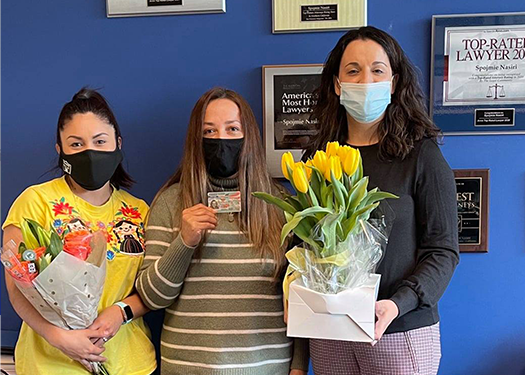The Immigration and Nationality Act (INA) permits the change of an individual’s immigration status while in the United States from nonimmigrant or parolee (temporary) to immigrant (permanent) if the individual was inspected and admitted or paroled into the United States and is able to meet all required qualifications for a green card (permanent residence) in a particular category. The common term for a change to permanent status is “adjustment of status.”
The INA provides an individual two primary paths to permanent resident status. Adjustment of status is the process by which an eligible individual already in the United States can get permanent resident status (a green card) without having to return to their home country to complete visa processing.
Consular processing is an alternate process for an individual outside the United States (or who is in the United States but is ineligible to adjust status) to obtain a visa abroad and enter the United States as a permanent resident) This pathway is referred to as “consular processing.”
Steps for Adjustment of Status
- Determine Your Basis to Immigrate
The first step in the adjustment of status process is to determine if you fit into a specific immigrant category. Most immigrants become eligible for a green card (permanent residence) through a petition filed on your behalf by a family member or employer. Others become permanent residents through first obtaining refugee or asylum status, or through a number of other special provisions.
- File the Immigrant Petition
When you know what category you believe best fits your situation, in most cases, you will need to have an immigrant petition filed on your behalf.
- Family Based
Family based categories require that a U.S. citizen or permanent resident relative file a Form I-130, Petition for Alien Relative, for you.
- Employment Based
Employment based categories most often require the intending U.S. employer to file a Form I-140, Petition for Alien Worker, for you. Entrepreneurs who intend to invest significant amounts of capital into a business venture in the United States may file Form I-526, Immigrant Petition by Alien Entrepreneur” on their own behalf.
- Special Classes of Immigrants
In some cases, certain immigrants may file a Form I-360, Petition for Amerasian, Widow(er), and Special Immigrant, or have one filed on their behalf. To learn more about who may file a special immigrant petition, see the “Form I-360” link to the right.
- Humanitarian Programs
Most humanitarian programs do not require an underlying petition, although individuals may need to meet additional requirements before they can adjust status. For more information, see the “Humanitarian” link to the right.
Depending on the category you wish to adjust under, you may be eligible to have the petition filed at the same time that you file your Form I-485, Application to Register Permanent Residence or Adjust Status. This is called “concurrent filing.” Immediate relatives of a U.S. citizen may be able to file concurrently. Also, other certain classes of individuals who have a visa immediately available may be able to file concurrently. Most categories, however, require that you first establish your eligibility for the immigrant category by having an approved petition before you are allowed to file Form I-485, for these categories you will not be able to file concurrently.
- File Form I-485, Application to Register Permanent Residency or Adjust Status
Regardless of whether a petition must be filed and approved prior to your filing Form I-485 or whether it may be filed concurrently, you will need to apply for permanent residence on Form I-485 at the appropriate time. Note: There are a few categories, which may require a different form than Form I-485.
When filing Form I-485, you must read the form instructions carefully and submit all required documentation and evidence required for your particular category. Failure to do so may result in your application being delayed or possibly denied for failure to establish that you are eligible to adjust status.
- Go to your Application Support Center appointment (fingerprints)
After you file your application, you will be notified to appear at an Application Support Center for biometrics collection, which usually involves having your picture and signature taken and being fingerprinted. This information will be used to conduct your required security checks and for eventual creation of a green card, employment authorization (work permit) or advance parole document.
- Go to your interview (if applicable)
You may be notified of the date, time, and location for an interview at a USCIS office to answer questions under oath or affirmation regarding your application. You must attend all interviews when you receive a notice.
When you go to your interview, you (and the family member that filed the Form I-130 petition on your behalf, if applicable) must bring originals of all documentation submitted with this application including passports, official travel documents, and Form I-94 regardless if they are expired. Not all applications require an interview. USCIS officials will review your case to determine if it meets one of the exceptions.
- Get you final decision in the mail
After all paperwork has been received, interviews conducted (if necessary), security checks completed, and other eligibility requirements reviewed, your case will be ready for a decision by USCIS. In all cases, you will be notified of the decision in writing.
The granting of permanent residency is generally recorded as the date that you became a permanent resident. Refugees and certain humanitarian parolees (e.g. Cuban, Lautenberg) will have their date of adjustment of status recorded as that of their entry into the United States as a refugee. Asylees, whether the principal filer or his/her derivatives, will have their date of adjustment recorded as 1 year prior to the date of being granted permanent residence.
